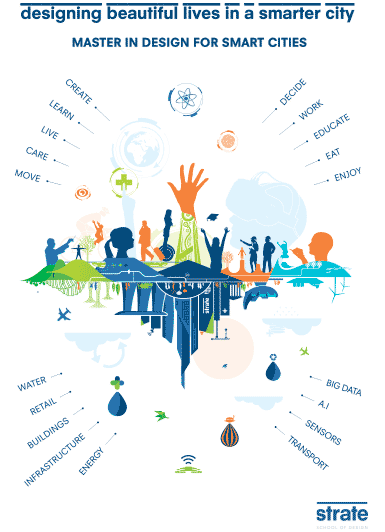What is a smart city?
When you think of a city, you think of an urban area with several infrastructural amenities that generally enable the citizens lead better lives, traditionally run by uniquely designed systems. The concept of a smart city however, is quite different from this. A smart city is practically alive. It uses sophisticated sensors to gather data. It then analyses this data, and uses the results to identify choke pointsꟷplaces where resources are overburdenedꟷand then redistributes resources and assets to counter these effects.
So what is the definition of a smart city? A smart city is better explained than defined. However, if we were to place a label on it, a smart city is a city that integrates information and communication technologies into its structure, in a bid to improve the quality of its systems, and give its citizens an improved quality of life. The information gathered in a smart city could range from sectors like traffic and transportation, water supply, waste management, schools, libraries, hospitals and health care, and even crime detection.
What makes cities intelligent?
Have you ever heard the phrase “knowledge is power”? This phrase is as true for people as it is for Smart cities. Because of all the information and data that Smart cities gather through their sensors, they are able to monitor all the events in the city in real time. They are intelligent because they know things. They know things like how much traffic is currently on the streets. They know how many citizens visited the hospital; how much water is being consumed. But beyond all this, they use this information to “unburden” some areas, and redistribute the load, creating a more efficient system.
Master in design for smart cities - Singapore
Master in design for smart cities, now open in Singapore
The Masters in Design for Smart Cities are a 2-year, postgraduate programmes, developed by globally renowned design university, Strate.
The Master Degrees will train Design Managers and Smart City experts. The multidisciplinary approach of combining design, humanities, technology and management, is taught through the model of Design Thinking and Design Doing, where students craft innovative mindsets based on design methodology and extensive hands-on practice.
What is the aim of a Smart city?
We say smart cities are intelligent because they know. But why exactly do they know? Why do governments invest so much in creating an integrated system of information gathering? At the core of it all, the aim of a Smart city is to make the life of its citizens better. It’s not so difficult to see how it might achieve this.
Imagine not being stuck in traffic because the system knows that your current route is headed for a jam, and redirects half the traffic to a different route using the traffic signs. That means the citizens can make it to work on time, see their doctors in good time, and receive adequate treatment. Speaking of adequate treatment, Singapore is fast becoming a Smart Nation thanks to this integration of ICT. Doctors now consult with patient on non-emergency cases via video conferencing. All of the resources of smart cities is geared towards making sure that citizens have a better quality of life.
Why do Smart cities matter?
To answer this question, we must first answer another one: What does a smart city do? Like we have discussed earlier, smart cities use data to create and improve efficiencies in the system. Various sectors are connected to each other, communicating and redistributing resources and assets to “level out” demand, and better manage the city.
Smart cities matter because they represent the next level of advancement in human civilization. While this may be debatable, it is clear to see how this technology can improve lives, and indeed it has begun to do so. So far, we have been able to provide efficiency in the way we communicate with each other, regardless of distance (the internet); we have been able to improve the efficiency of the way we move around and its impact on the environment (electric cars). We have even improved the efficiency of how we find love (dating websites). One of the only things we have thus far been unable to do is find a way to make all of these seemingly unrelated parts work together. And that is why smart cities matter. Because they connect everything, and make US efficient.
What are the features of a smart city?
Judging from what we already know about smart cities, we can begin to understand some of the features that are present in the city. More specifically, the benefits that the citizens enjoy. Some of them include:
- Smart transportation system: Due to the free flow of information, there is bound to be adequate coordination of traffic and transportation in general
- Improved health care: Just like they have in Singapore with video conference consulting sessions
- Smart power grids: The coordinated redistribution of power from areas with low consumption to those of high consumption.
- Efficient waste management
In general, the improvements will cut across every sector of the city, as long as there are sensors monitoring data, and open channels of communication with other sectors and systems within the Smart city framework.
What are the advantages of a smart city?
Living in a smart city has only one advantage. Fortunately, it is one that encompasses all the significant aspects of living in any urban area. The advantages of a Smart city include:
- Safer communities because of improved crime detection, and efficient security measures
- Improved government-citizen interaction and engagement
- Reduced pollution, and increased eco-friendliness
- Much better transportation
- Efficient public resources and utilities
- Better economic opportunities
- Better infrastructure
Smart cities are more than just a theoretical phenomenon. They are fast becoming a reality, as several places like Singapore and Stockholm have already begun to help their cities “learn”. It’s only a matter of time before more and more cities and countries integrate this technology, bringing us one step closer to true worldwide efficiency.

